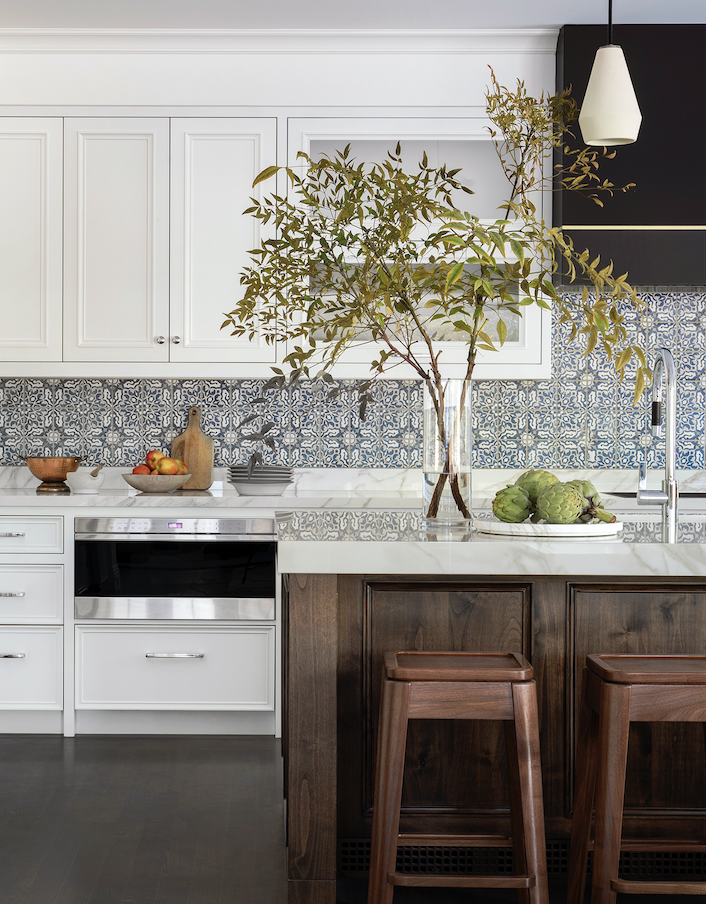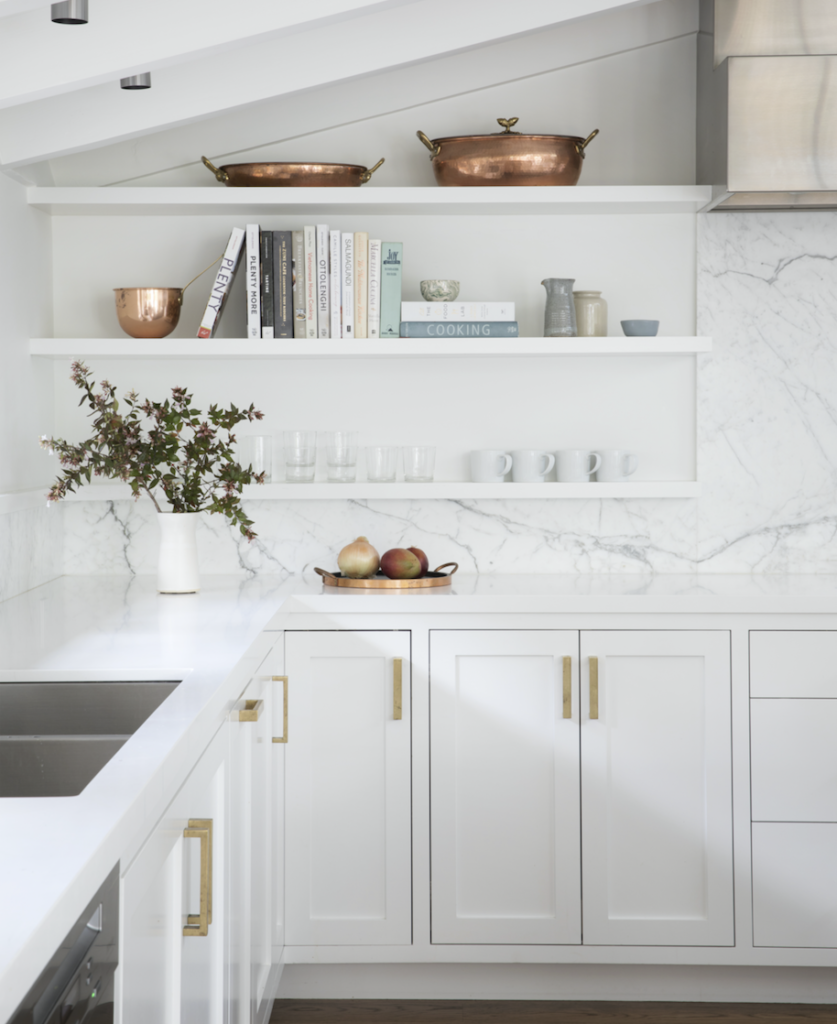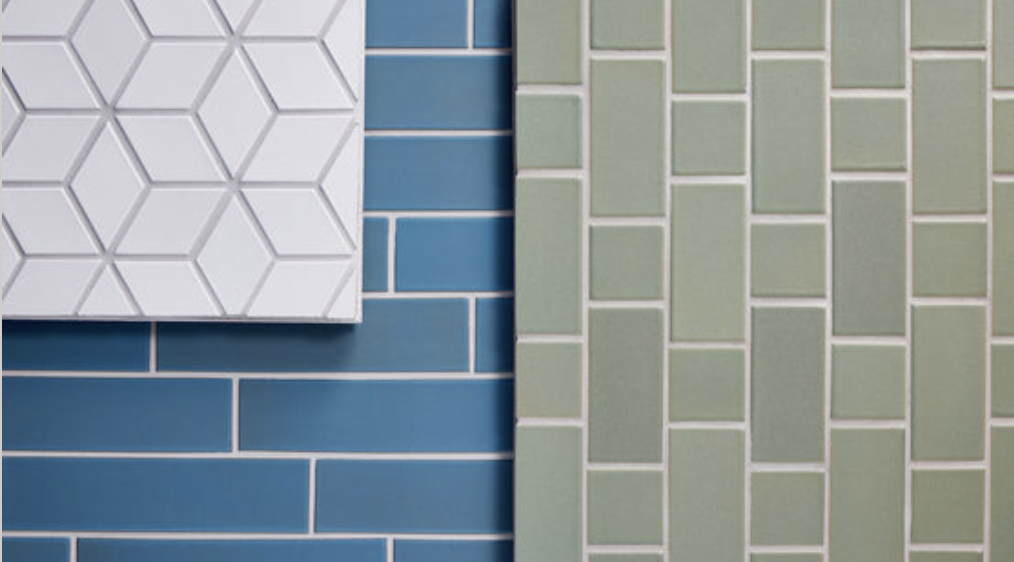Sustainable Kitchen Design Tips
With the holidays quickly approaching, now is the perfect time to think about ways to make your kitchen more sustainable. Our team of San Francisco interior designers are sharing some small but meaningful ways to green your kitchen – focusing both on making healthier choices for your family and the environment. Ready for a full remodel? We got you covered too!

SMALL CHANGES, BIG IMPACT
According to the FDA, high levels of toxic chemicals from non-stick cookware can enter our food supply and cause long-term damage to our health. These chemicals are also resistant to breakdown, remaining in the environment for millions of years and harming future generations. While these dangerous chemicals known as PFAS (per- and polyfluoroalkyl substances) were commonly found in many Teflon and nonstick pans sold nationwide, they are thankfully being phased out of production. It’s still important to check the labels to find out exactly what materials are used in new cookware before making a purchase. Replace your old non-stick pans with ceramic or cast iron alternatives that don’t contain PTFE or PFOA.
Recycle and compost. Recycling comes naturally to most of us since we’ve been doing it for so long, but composting is still new to some. If you aren’t already in the green bin game read on for two reasons why composting is so crucial.
- Organic waste in landfills generates methane, a potent greenhouse gas. We can significantly reduce methane emissions by composting wasted food and other organics.
- Composting reduces the need for chemical fertilizers, which pollute our rivers and streams.
Reduce or eliminate the use of single use plastic sandwich bags and switch to reusable snack bags. My personal favorite are Stasher silicone bags which are BPA and phthalate free and come in a variety of sizes and fun translucent colors. I prefer these to other reusable bags because you can easily see the contents inside.
Keep your food fresh and cover your leftovers with reusable food wraps to replace single use plastic. Our favorite is ‘Bee’s Wrap’, which is available in bees wax or vegan plant-based wax formulas.
Use non-toxic, plant based cleaning products. Most traditional cleaning products contain active ingredients and fragrances that are linked to asthma, allergies, and hormone disruption. Conventional cleaning products are also bad for the environment – the ingredients cause harm to marine life and drinking water, and continue our reliance on petroleum. Start the process of replacing your traditional cleaning products with plant-based alternatives.
Make it a family goal to reduce the amount of waste your household produces every week. Avoid buying products that have excessive packaging or that are individually packaged. Buy foods like nuts, grains, oils, meats and spices in bulk or at the counter. Bring reusable produce bags with you to the supermarket for veggies and fruits.

SUSTAINABLE REMODELING TIPS
Gas ranges are on the outs – they contribute to global warming by leaking harmful methane gases even when not in use. Some San Francisco Bay Area cities (such as Berkeley, California) are starting to ban installing gas ranges in new homes. Make the switch to induction or electric cooktops which are more energy efficient and don’t emit harmful chemicals into your home (and the atmosphere). And remember to always use an exhaust fan while cooking!
Kitchen cabinets are one of the largest components of a kitchen and can often off-gas harmful chemicals into your home. Avoid cabinets that use urea formeldyhyde and look for cabinets constructed of FSC certified or sustainably harvested wood.
COUNTERTOPS + TILE
There are many factors to consider when determining if a countertop material is eco-friendly and unfortunately there is no magic bullet solution. Does it travel across the globe to get to your home, incurring a big carbon footprint? We look for recycled content, whether the material is renewable, and how much energy is required to make the product. When possible, choose materials sourced locally to cut down on the energy required for transportation. We always consider the durability of a countertop and how long a lifespan it will have in a home to make sure we are selecting the appropriate countertop for a client. Many of our clients are families with children and prefer a durable, low maintenance solution that doesn’t require any upkeep. Natural stones such as marble require more maintenance – not only do they need to be sealed on a regular basis, but they can also be more prone to staining and etching from food and wine spills. We’ve found that quartz countertops such as Caesarstone and Cambria are resilient and last for many years.
Quartz is a common waste product of mining industries – companies like Caesarstone have turned it into a premium, sustainable product. Adhesives used in Caesarstone Quartz contain polyester and acrylic epoxies that have either low or no VOC emissions. Naturally nonporous, it prevents the growth of surface molds without being treated with harmful chemicals.
Often used in commercial kitchens, stainless steel is making it’s way into more and more homes. Stainless steel contains at least 60 percent recycled content and is 100 percent recyclable. It creates a sleek contemporary look and it’s resistance to rust and heat make it a low maintenance option. Stainless steel is non-porous therefore will not harbor germs; it requires non-toxic, mild soap for clean up.
Paper composite countertops are made from recycled post-consumer paper waste, bamboo fibers and salvaged wood fibers/cellulose compressed with petroleum-free resins. Although prone to mild scuffing and scratches, it is heat resistant and easy to maintain. Similar to natural wood, paper composite countertops will naturally patina over time intensifying in depth and color. PaperStone is FSC certified and comes in a variety of colors.

When selecting a backsplash tile for your home remodel consider supporting manufacturers with low or zero waste facilities or that use recycled content in their tiles. Two of our local favorites are Fireclay Tile and Heath Ceramics.
Heath Ceramics Goes Zero Waste
Heath Ceramics is a California-based company that has been producing handmade ceramic tableware and tiles since 1948. In recent years, the company has gained attention for its commitment to sustainable and zero-waste manufacturing practices. One of the key ways that Heath Ceramics has reduced its environmental impact is by implementing a closed-loop manufacturing system. This means that all waste materials generated during the production process are either reused or recycled, with nothing going to landfill. For example, excess clay from the production of ceramic pieces is reclaimed and reused, while water used in the production process is treated and recycled.
Another aspect of Heath Ceramics’ zero-waste manufacturing approach is its focus on local sourcing and production. The company sources clay from local mines in California and uses renewable energy sources to power its manufacturing facilities. By minimizing transportation and energy use, Heath Ceramics is able to reduce its carbon footprint and support the local economy.
Heath Ceramics also encourages customers to participate in its zero-waste mission by offering a “Tile Takeback” program. This program allows customers to return excess or unwanted tiles to the company, which are then recycled or repurposed. By keeping materials in circulation and out of landfills, Heath Ceramics is able to reduce its environmental impact while also promoting a culture of sustainability. Need more ideas for your Bay Area kitchen remodel? Take a look at our San Francisco Bay Area interior design projects for more inspiration!
